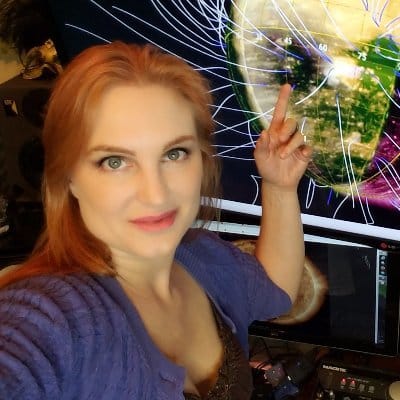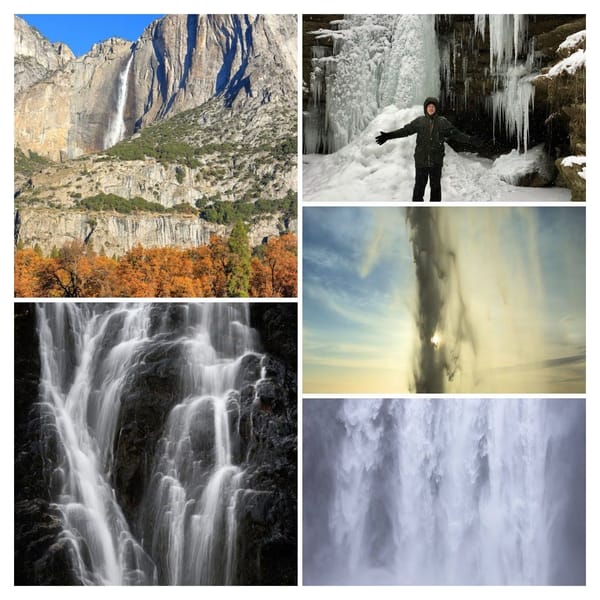Q and A with Space Meteorologist Dr Tamitha Skov
Space Weather Physicist. Tamitha stares at the Sun a lot!

Dr Tamitha Skov – Los Angeles, CA.
Tamitha stares at the Sun a lot. She is a credentialed space weather forecaster and has been helping the public understand the effects of Space Weather on our daily lives since 2013.
Tamitha’s forecasting work as the “Space Weather Woman” is widely known on social media such as YouTube, Twitter, and Facebook and you may have caught her on several television shows for The Weather Channel and The History Channel.
Question 1. What was your most memorable weather event?
The Mother’s Day solar storm of 2016. Even though this wasn’t the strongest storm on record, it was the first in which I had a GPS drone operator give me real evidence that a solar storm could dramatically impact the navigation of a popular drone. I had been reporting on the possibilities of such issues for years, but that storm was the first time anyone gave me the telemetry and actual flight path information of the affected drone. What really made a lasting impression on me was that this drone incident occurred only about 30 miles away from an active Amazon Air drone delivery facility in the UK.
Question 2. What is your favourite and least favourite type of weather?
Space Weather is really a mixed bag. Unlike traditional weather, what is considered spectacular for aurora photographers and space enthusiasts is considered horrible for amateur radio operators and GPS enthusiasts. For instance, back in 2015, we saw brilliant, rainbow-colored aurora that reached much of Europe and North America. It was even seen in places as far south as Brittany, France, Arkansas, USA, and as far north as Perth, Australia. But that same storm ruined a worldwide contest for amateur radio operators and made things difficult for emergency responders to do their jobs. So every space weather storm has positives and negatives. It has me both cheering and booing at the same time.
Question 3. If you weren’t a meteorologist what would you most like to be?
Actually, I am a physicist by training. I’m not a classically trained meteorologist. Space Meteorology isn’t really a field yet, especially in the realm of public consulting and broadcasting. Official Space Weather forecasts are a responsibility still held by government agencies like NOAA. In fact, space meteorology today is analogous to what terrestrial meteorology was in the 1960s. Back then early meteorologists, like Harry Volkman, would grab weather forecasts from military bases and broadcast them to the public. Following a similar path, the government regularly does space weather forecasts, but it’s not really their responsibility to disseminate them to the public. So much of the explanation behind their predictions goes unsaid. I am trying to change all that.
Question 4. From a purely meteorological point of view, where would you most like to live?
This is a really difficult question, obviously, but I think I would most like to live on one of the moons in the Jovian system, like Europa or Ganymede, or perhaps Saturn’s Earth-like moon, Titan. Living on one of these magnetized moons, not only would you see aurora in your own skies during a solar storm, but you would also get a chance to see aurora in the sky of your host planet. Of course the terrestrial weather there would be unlivable. It’s too bad Earth’s Moon isn’t like more Titan or Europa. Could you imagine looking up at the Moon at night during a solar storm and seeing aurora, like little glowing halos surrounding its poles? It would happen far more often than most people yet realize. What a magical sight that would be.
Question 5. Is there anything else you’d like to share?
Yes, please tune into the upcoming spectacular Space Weather event, the great solar eclipse on August 21, 2017! NASA will have LIVE coverage of this event as the eclipse travels from the east coast to the west coast of the USA in a few hours. The broadcast will be on NASA TV and likely picked up by multiple worldwide news agencies. I will be joining the coverage during the eclipse passage over the NASA Glenn Research Center stationed in Jefferson City, Missouri. More details are available by clicking here for the NASA website (Please note: This event took place in 2017 but details can still be found by following the NASA link)
If you are interested in being a Featured Meteorologist on StormHour please contact mark @ stormhour.com or via DM on Twitter





